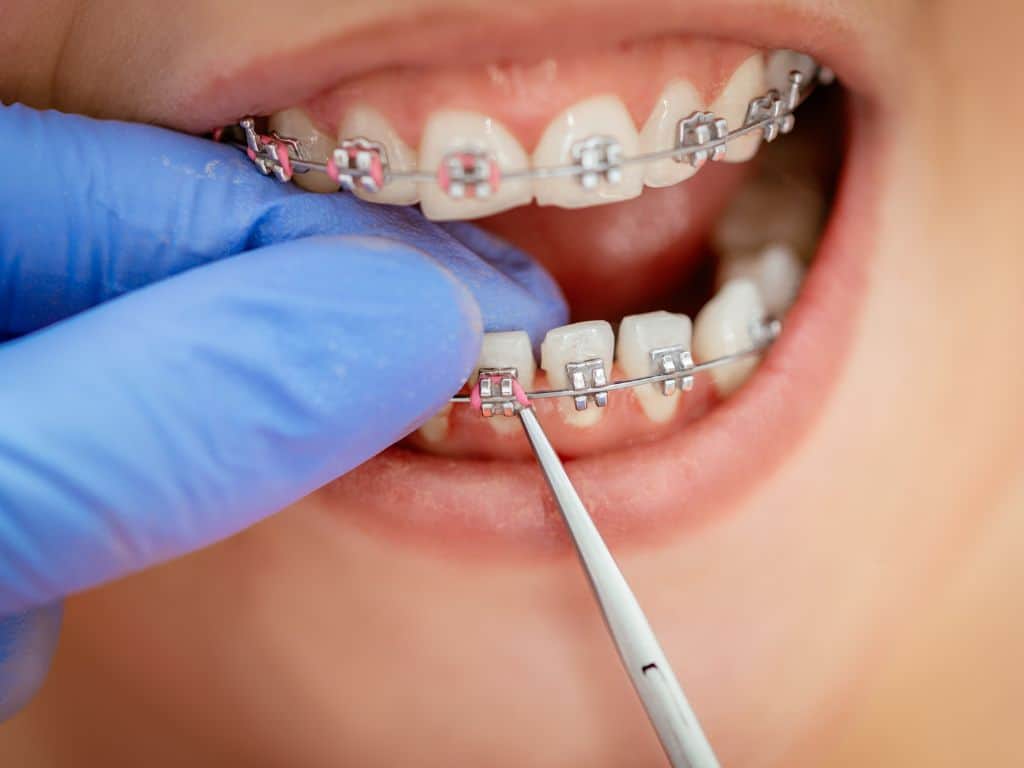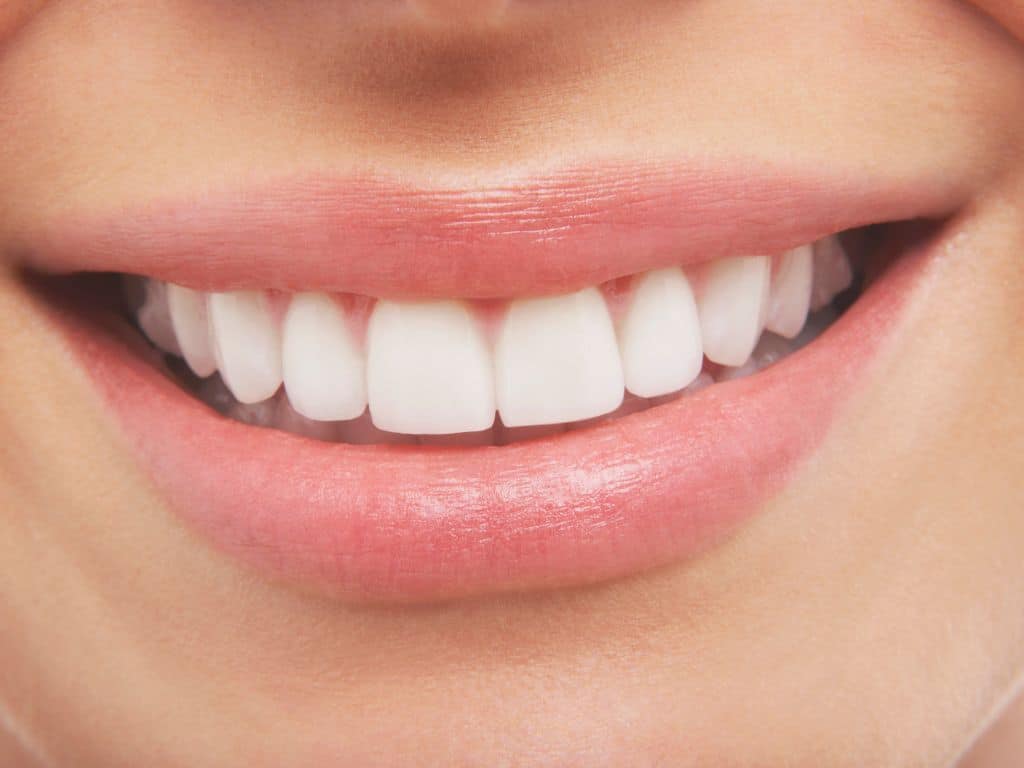Do Braces Make The Roots of Your Teeth Shorter?
Last Updated on July 4, 2023 by Gio Greenard
People want braces for a number of reasons, but one of the biggest ones is for healthier teeth and gums. As such, many patients are concerned about the effects braces might have on the roots of their teeth. One of the most common questions we are asked is “Do braces make the roots of your teeth shorter?” While it is possible for roots to grow shorter, it’s not necessarily a cause for concern.
Permanent teeth can experience root resorption from the inside out (internal resorption), but external resorption is often more common. A tooth’s cervical region is affected by external resorption near its gum line. A pinkish color may appear in the early stages of this condition. Eventually, these spots develop into cavities.
Because the destruction can be rapid, it is important to treat it as soon as possible. Minor periodontal (gum) surgery can sometimes expose the affected root of the tooth if the lesion is small. The tooth is repaired by removing the damaged tissue cells and filling it with a tooth-colored filling material, such as composite resin or glass ionomer cement.
The CBCT scans can reveal the existence of tiny anatomical structures within tissues in three dimensions, allowing the problem to be identified. In advance treatment planning can be made more accurate with this high-tech imaging method. It is possible to gradually move a tooth outward from the jawbone through treatment. New bone grows behind it as gum tissue moves with it. Thus, gum recession at the affected tooth can be avoided if the contours of the gum line match up.
Contents
FAQ
How Do Braces Work?
Braces work by creating little cramps known as “Charlie horses” around the base of each tooth in order to move it to its proper position. When teeth are contracted in this way, the ensuing pressure naturally causes enzymes to form in the mouth. In turn, these enzymes cause existing bone to dissolve and creates new bone wherever there is a void.
Pressure placed on the teeth will also cause the periodontal membrane that surrounds the bottom portion of your tooth to stretch on one side and loosen on the other. This, in turn, causes the tooth to become looser and move to its new position. New bone then grows next to the newly-positioned tooth to help support it. This process is known as bone remolding.
These processes are normal and are very necessary if teeth are to be straightened. However, over time, they can have an impact on root length, since bone is constantly being dissolved and then regrowing.
What are the Effects of Tooth Movement?
The fact that enzymes cause the bone to be dissolved causes a change in the size, shape, and length of tooth roots in all patients. It is virtually impossible to straighten the teeth without modifying the length of the roots in the process. Known as root resorption, this phenomenon is virtually unnoticeable to the naked eye in 98% of all patients. The other 2% of patients may experience obvious root shortening, which can vary based on a number of factors.
Even obvious root shortening may not be cause for concern. Most teeth can lose around half of their root length without experiencing a problem for the patient. In fact, tooth loss due to root resorption after braces is actually a very rare occurrence. As such, there is really no reason to be concerned about root shortening before or after braces.
What about Prevention During Treatment?
Although root resorption is rarely an issue, there are nonetheless several things an orthodontist can do before and after braces to prevent problems from occurring. There is some indication that root resorption runs in families, which is why patients with family members who have experienced this condition should notify their orthodontist of this before beginning treatment. That way, he or she can be monitored more closely for signs of shortened roots.
In some cases, moving the teeth too slowly or too quickly can result in root resorption. Teeth that are moved too quickly may be exposed to excessive amounts of pressure that in turn would cause more enzymes that break down bone to be present. The risk of root resorption may increase the longer braces are worn because teeth would be placed under pressure for longer. For this reason, moving them too slowly could also cause a problem.
Aside from genetics, there is virtually no way for an orthodontist to determine which patients might be prone to experiencing root resorption. The extent of crowding, the condition of the teeth, or type of appliance worn doesn’t appear to have a bearing on whether or not a noticeable shortening of the roots actually occurs. Orthodontic treatment can be performed in the same manner on hundreds of different patients, but only a few of them will experience a significant shortening of their root systems. Some patients have worn braces for five years or more without experiencing problems, while others may have noticed changes in less than two years.
Does the orthodontist need to perform X-Rays?
To identify signs of root resorption, orthodontists like to perform x-rays at least annually to check for changes in the size, length or shape of the roots. If only minor changes are detected, orthodontic treatment will likely continue as anticipated. On the other hand, if there have been serious changes in root length since the last x-rays were taken, changes to the treatment plan might be needed. Some of the changes that could occur are:
- Changing how treatment is provided in order to reduce the number of “Charley horses” in the teeth
- Shortening the length of treatment
- Removing braces immediately, which is only recommended in very serious cases of root resorption
The exact changes recommended by your orthodontist will depend on a number of things such as:
- How far you are along in your treatment plan
- The extent of root resorption you are experiencing
- Potential for further shortening
- Your individual smile goals
Addressing your Concerns
If you are still concerned about the possibility of root resorption, talk with your orthodontist about it before beginning treatment. This is especially important if you have other family members that have experienced a problem with shortened roots in the past. Other things you can do include:
- Maintaining regular appointments for adjustment to ensure too much pressure isn’t placed on certain teeth for any extended period of time
- Attending all scheduled x-ray appointments
- Asking your orthodontist to allow you to compare previous x-rays with your current one so you can see the amount of change that’s taken place
- Notifying your orthodontist immediately if you experience pain or extreme sensitivity, as these symptoms sometimes accompany root resorption
Accordingly, if you follow the treatment plan outlined by your orthodontist, the amount of root resorption you experience should be minimal. Root resorption is necessary if teeth are to be straightened, and the shortening of roots should not affect the future health or performance of your teeth in any way.
Beach Braces Orthodontics, located in Manhattan Beach, specializes in Orthodontics for adults and children and would be happy to consult with you regarding lingual braces or any of the many other options available. Dr. Panucci is ready to treat you. Make an appointment today.

Dr Patti Panucci attended the University of Louisville School of Dentistry for four years, where she graduated with a DMD degree (May 2000) among the Top 10 in her class. Following that, she headed west to Los Angeles to complete her three-year residency at one of the top-ranked orthodontic programs in the country – the University of Southern California.
Along with her certificate in orthodontics, Dr. Panucci earned a master’s degree in craniofacial biology. During those three years, she fell in love with Southern California beach life and decided that this was where her future lay.










Leave a Reply
Want to join the discussion?Feel free to contribute!